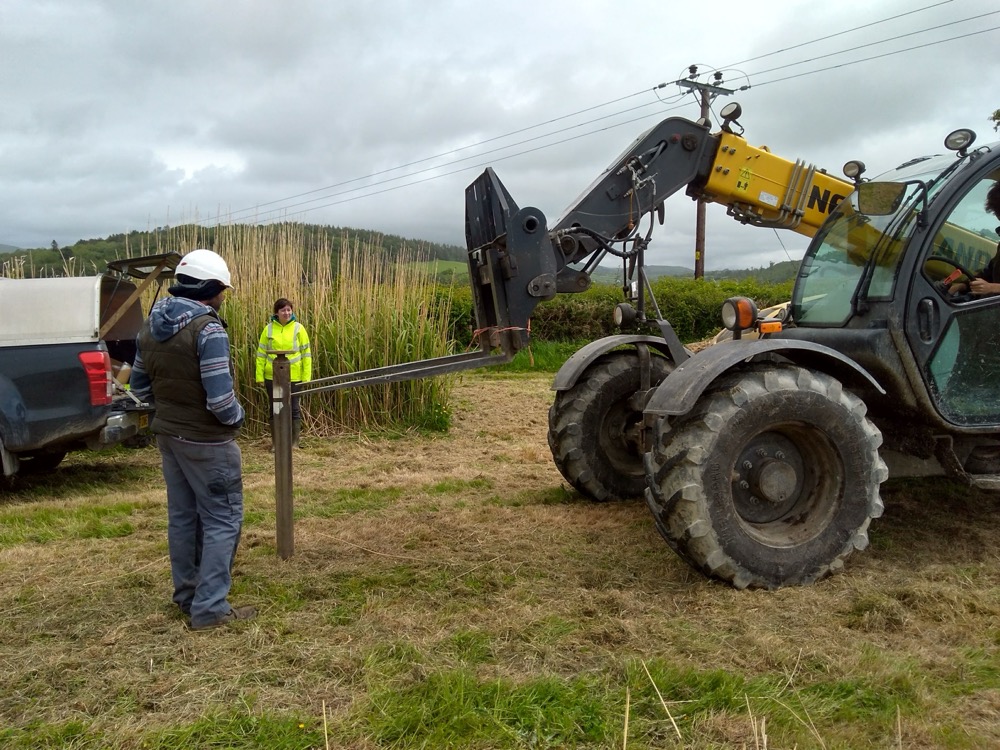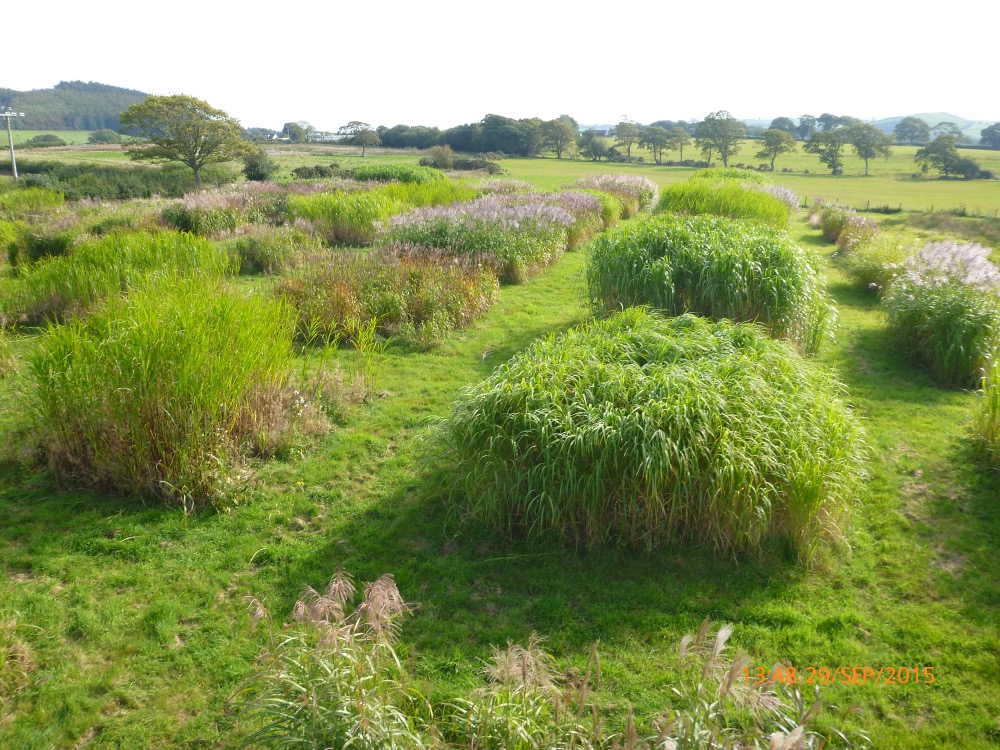Long-Term IBERS Study Reveals Genotypic Influence on Soil Carbon Sequestration in Miscanthus

Miscanthus Trial Plots
08 October 2025
A new study from researchers at IBERS, Aberystwyth University, has shown that different Miscanthus genotypes vary widely in their ability to store carbon in soils. A genotype refers to the genetic makeup of a plant, which influences its traits such as growth, yield, and ability to store carbon. This could have major implications for climate change mitigation and plant breeding.
The research, published in GCB Bioenergy, examined a long-term field trial near Aberystwyth where diverse Miscanthus genotypes were grown for over a decade. The site, part of IBERS’ approximately 1,000 ha of land resources was representative of marginal agricultural land with shallow soils, high stone content and a predominantly wet and cool climate. By analysing soil cores before and after conversion from grassland, the team investigated how soil organic carbon (SOC) stocks changed under different Miscanthus types.
“This is one of the few long-term studies to track soil carbon changes across a diverse range of Miscanthus genotypes,” said Dr Paul Robson, senior author and IBERS researcher. “Our findings show that genotype selection can play a key role in maximising carbon sequestration without compromising yield.”

The findings are encouraging: overall, the soil carbon lost during the initial conversion from pasture was recovered, with SOC levels under Miscanthus comparable to pre-conversion stocks. However, there were striking differences between genotypes – with as much as 32 tonnes of carbon per hectare separating the best and worst performers.
Traits such as rhizome mass and leaf litter production were linked to higher carbon inputs to the soil, highlighting opportunities for breeders to select varieties that combine high yields with improved soil carbon storage. Importantly, the study found that strong biomass yields did not come at the expense of carbon sequestration, dispelling concerns about a trade-off between productivity and soil health.
Dr Paul Robson, who led the study, said:
“Our research demonstrates that genotype choice really matters. By selecting and breeding for the right Miscanthus traits, we can enhance both yield and soil carbon storage, maximising the role of biomass crops in delivering climate benefits.”
Key Findings:
- SOC Recovery: Average SOC stocks returned to pre-conversion.
- Genotypic Variation: SOC stocks varied by up to 32 tonnes C ha⁻¹ between the highest and lowest performing genotypes.
- Trait Associations: High rhizome mass and leaf litter (ripening loss) were positively associated with increased SOC.
- Yield vs. Carbon Trade-off: High-yielding genotypes did not necessarily result in lower SOC, suggesting breeding for productivity need not compromise climate benefits.
The study evaluated 13 genotypes across five species groupings, including M. sinensis, M. sacchariflorus, and hybrids such as M. × giganteus. While species grouping did not significantly affect SOC outcomes, genotypic differences were pronounced, with only two genotypes showing consistently lower SOC contributions.
Implications for Breeding and Policy
The research supports the integration of SOC-related traits into Miscanthus breeding programmes, aligning with UK and EU NetZero strategies. With biomass crops increasingly recognised for their role in greenhouse gas removal, selecting genotypes that enhance below-ground carbon storage could amplify the climate mitigation potential of bioenergy systems.
The study was supported by the BBSRC Perennial Biomass Crops for Greenhouse Gas Removal project and the Resilient Crops programme.
Access the Publication
The full paper is available via GCB Bioenergy: Genotypic Differences in Soil Carbon Stocks Under Miscanthus: Implications for Carbon Sequestration and Plant Breeding.




